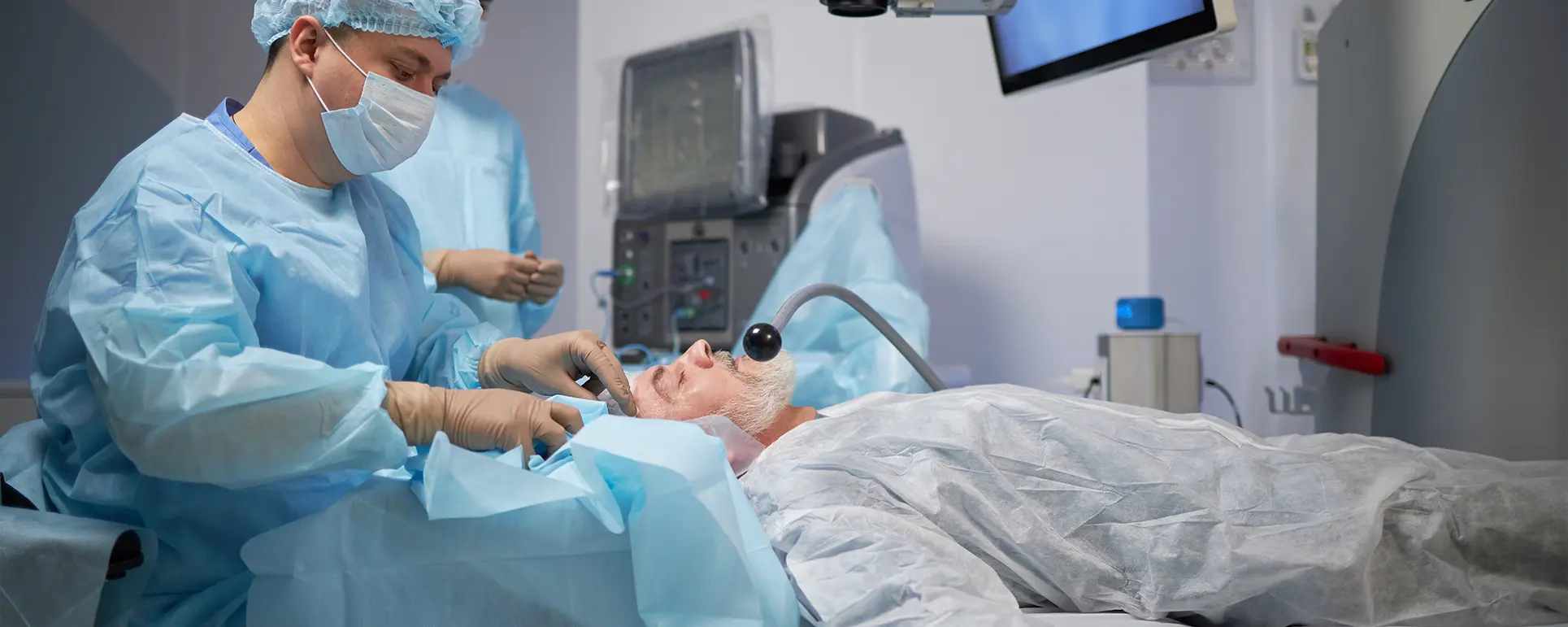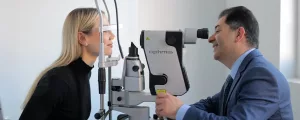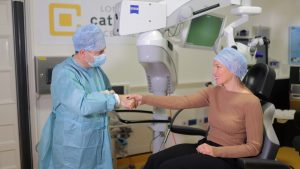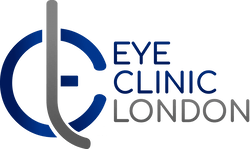Is LASIK Eye Surgery Painful?

If you’re thinking about LASIK, you’ve probably asked yourself:
“Will it hurt?”
It’s completely normal to feel nervous after all, the idea of lasers near your eyes can sound intimidating. But the truth is, LASIK isn’t painful. With the help of modern technology and numbing eye drops, you’re likely to feel more pressure than pain. Many people are actually surprised at how quick and comfortable the entire procedure feels.
Before your surgery, you’ll meet your surgeon, go through a detailed eye examination, and have the anaesthetic drops applied to keep you comfortable. During the procedure, you might notice some pressure or slight blinking reflexes, but it’s all very manageable. Most people find that the process is over before they even realise it.
After LASIK, you may experience mild irritation, dryness, or a sensation like something is in your eye, but these feelings usually ease within a few hours to a day. Your recovery is often smoother than you imagine, and you’ll be able to enjoy clearer vision very quickly.
In this article, you’ll discover exactly what to expect at every stage how your comfort is ensured, what sensations are normal, and why most people are amazed at how easy LASIK really is.
Understanding LASIK Eye Surgery

Before diving into what you’ll feel, it helps to understand what actually happens during LASIK.
LASIK (Laser-Assisted In Situ Keratomileusis) is a type of refractive surgery that reshapes the cornea (the front part of your eye) to correct common vision problems like:
- Short-sightedness (myopia)
- Long-sightedness (hyperopia)
- Astigmatism
By reshaping the cornea, light can focus properly on your retina allowing you to see clearly without glasses or contact lenses.
The entire procedure usually takes under 15 minutes for both eyes, and patients are typically back to normal activities within a day or two.
Does LASIK Hurt? The Honest Answer
In short no, LASIK doesn’t hurt.
During the procedure, your surgeon applies anaesthetic eye drops that completely numb your eyes. These drops work within seconds and prevent you from feeling pain.
Most patients describe the sensations as:
- Mild pressure when the laser reshapes the cornea
- A feeling of cool air or suction as the device stabilises the eye
- Slight dryness or irritation during recovery
But pain? Almost never.
In fact, many patients are surprised by how calm and painless the experience is. Some even chat with their surgeon throughout the procedure.
Step-by-Step: What You’ll Feel Before, During and After

Let’s go through the LASIK journey from start to finish so you know exactly what to expect at each stage.
Before the Procedure
You’ll arrive at the clinic for your appointment, where your eyes will be checked and prepped.
What happens:
- Your surgeon applies anaesthetic eye drops to numb your eyes.
- You may also receive a mild sedative if you feel anxious.
- Your eyelids are gently held open with a small device (you won’t feel it).
What you’ll feel:
- Slight coolness from the numbing drops.
- No pain, no needles, and no injections.
You’ll be awake the whole time but relaxed and comfortable.
During the Procedure
Once the numbing drops take effect, the actual surgery begins.
The steps are quick and carefully controlled:
- Creating the corneal flap
A femtosecond laser or microkeratome creates a thin flap on the cornea. You may feel gentle pressure, but no pain. - Reshaping the cornea
The flap is lifted, and an excimer laser reshapes the underlying corneal tissue based on your prescription. This part takes less than a minute per eye. - Repositioning the flap
The flap is placed back into position, where it adheres naturally without stitches.
What you’ll feel:
- Slight pressure for a few seconds.
- A mild sense of something “happening” to your eye, but not pain.
- You may notice a dim or blurry view, and possibly a faint smell from the laser (which is normal).
The laser itself is painless, and the entire process for each eye takes under 5 minutes.
Immediately After the Procedure
As soon as the laser is done, your surgeon will check your vision and apply lubricating eye drops.
What you’ll feel:
- Slight blurriness or foggy vision (like looking through a misted window).
- Mild grittiness or dryness, similar to having an eyelash in your eye.
- Possibly a bit of watering or light sensitivity for a few hours.
These effects are short-lived and completely normal. Most people go home shortly after the surgery with protective eye shields and a clear aftercare plan.
What About After the Anaesthetic Wears Off?
As the numbing drops fade (usually after an hour or two), you may feel:
- Mild irritation or dryness
- A gritty sensation
- Slight sensitivity to light
These symptoms typically last only a few hours and can be managed with prescribed lubricating eye drops and rest.
Most patients describe the sensation as “discomfort” rather than pain similar to wearing contact lenses too long.
Within 24 hours, your eyes will start feeling normal again, and your vision will continue to sharpen over the following days.
LASIK Recovery: Day-by-Day Sensations
On the first day, you might notice mild dryness and some light sensitivity. The best thing you can do is rest your eyes and avoid rubbing them.
In the days following LASIK, you may notice mild dryness, light sensitivity, or a gritty feeling. These sensations typically ease within a few days with the use of lubricating drops and rest.
As your eyes continue to heal, most people notice their vision stabilising and any mild irritation gradually fading. Recovery is usually smooth, allowing a return to normal activities without major discomfort.
Pain Relief and Comfort Measures
Your eye surgeon will give you everything you need to stay comfortable after LASIK, including:
- Lubricating drops to soothe dryness.
- Anti-inflammatory medication to prevent irritation.
- Protective eye shields to wear while sleeping.
You can also:
- Rest your eyes for the first 24 hours.
- Avoid makeup, swimming, or direct water contact for a week.
- Wear sunglasses outdoors to reduce sensitivity.
If you ever feel discomfort that doesn’t subside within a day or two, you should contact your clinic but this is rare.
What Patients Say About LASIK Pain
Many people who’ve had LASIK are often surprised by how comfortable the procedure actually is. Here’s what some patients share:
“I was so nervous it would hurt, but I didn’t feel anything! Just a bit of pressure for a few seconds and I could already see clearly when I sat up. It was over before I even realised it.”
“It felt strange at times, but never painful. I was amazed at how quick the procedure was, and I was able to drive the very next day. Honestly, it was easier than I expected.”
These experiences are very common. Most patients report only minimal discomfort usually just a brief sensation of pressure and are able to resume normal activities almost immediately. You’ll find that any temporary irritation or dryness disappears quickly, leaving you with sharper vision and minimal fuss.
Hearing these stories can be reassuring if you’re feeling nervous. You’re not alone in wondering about pain, and the consensus is clear: LASIK is far more comfortable than many people anticipate.
Why LASIK Doesn’t Hurt: The Science Behind It
LASIK’s comfort level comes down to precision and technology.
- Advanced Lasers
Modern femtosecond and excimer lasers are incredibly precise they reshape the cornea without touching surrounding tissue, minimising irritation.
- Anaesthetic Drops
These specially formulated numbing drops block pain receptors in seconds. They’re so effective that you won’t even feel the laser.
- Quick Procedure
Because LASIK takes only a few minutes, your eyes aren’t exposed or manipulated long enough to cause significant discomfort.
- No Stitches, No Bandages
The corneal flap naturally reseals itself, so there’s no invasive stitching or post-operative soreness.
What About LASEK or PRK Are They More Painful?
People sometimes confuse LASIK with LASEK or PRK, which are related but slightly different procedures.
In LASEK and PRK, the surface layer of the cornea (epithelium) is removed and then allowed to regrow naturally. This can cause a few days of mild soreness during healing.
However, both are still considered low-pain surgeries, and discomfort is easily managed with medication and protective lenses.
If your surgeon recommends Lasek surgery in London instead of LASIK, it’s usually because your corneal thickness or eye shape makes it the safer choice not because of pain concerns.
Are There Any Risks of Pain After LASIK?
Severe or prolonged pain after LASIK is extremely rare. If it does occur, it’s usually due to a temporary issue such as:
- Dry eyes (common and treatable)
- Corneal irritation from rubbing
- Inflammation (managed with medicated drops)
Following your aftercare instructions will significantly reduce these risks.
Dry Eyes After LASIK A Common, Manageable Effect
One of the most common post-surgery sensations is temporary dryness.
After LASIK, your corneal nerves take a few weeks to heal fully. During that time, your eyes may produce fewer tears.
Symptoms include:
- Dryness or grittiness
- Fluctuating vision
- Slight redness
Your doctor will recommend lubricating drops to keep your eyes hydrated. In most cases, dryness resolves within 1–3 months.
How to Keep LASIK Pain-Free and Comfortable
Follow Aftercare Strictly
Use your prescribed drops exactly as instructed and avoid rubbing your eyes.
Rest and Protect Your Eyes
Get plenty of sleep, and wear your protective shields for at least 2–3 nights.
Stay Hydrated
Drink water regularly and keep your environment humid if possible.
Avoid Screens Initially
Give your eyes time to rest from digital strain during the first 24–48 hours.
What If You’re Scared of Pain?
It’s completely normal to feel nervous before LASIK. Even if you normally have a high pain tolerance, the idea of lasers near your eyes can make anyone anxious. You might find yourself imagining discomfort that, in reality, doesn’t happen.
Here’s the good news: anxiety often makes you expect pain that never comes. Once the numbing drops take effect, most people notice their worries melt away almost instantly. The pressure you might feel is brief and very manageable.
If you’re still feeling particularly anxious, your surgeon can offer a mild sedative to help you relax and feel calm before the procedure. You’ll be fully awake, but much more comfortable, and able to focus on the fact that the process is quick, safe, and designed with your comfort in mind.
Remember, you’re not alone in feeling nervous, and the majority of patients leave their LASIK appointment surprised at how painless and easy it was.
When to Contact Your Doctor
After LASIK, call your clinic if you experience:
- Sharp or increasing pain beyond 24 hours
- Excessive redness or discharge
- Sudden drop in vision
These are rare but should always be checked promptly.
At Eye Clinic London, your care doesn’t end with surgery. Your doctor will schedule follow-up visits to monitor healing and answer any concerns.
Long-Term Comfort After LASIK
Once your eyes have fully healed, LASIK generally doesn’t cause any ongoing discomfort. Most people enjoy clearer, sharper vision without irritation and these benefits often last for many years.
You might occasionally notice mild dryness or glare at night, especially in the first few months. The good news is that these side effects are usually temporary and easy to manage. Using lubricating eye drops, taking short breaks from screens, or making small lifestyle adjustments can keep your eyes feeling comfortable.
Many patients are pleasantly surprised by how little maintenance LASIK requires in the long term. Once your eyes have adjusted, you can enjoy everyday activities like reading, driving, or working on a computer without worrying about pain or discomfort.
Comparing LASIK with Other Vision Correction Procedures
When you look at different vision correction options, LASIK stands out as one of the least painful. Most people experience little to no discomfort, and recovery is usually just a day or two. This makes it a convenient choice for a wide range of vision issues.
Other procedures, like LASEK or PRK, can cause mild soreness for a few days and may require a slightly longer recovery, especially if you have thin corneas or lead an active lifestyle. Refractive Lens Exchange (RLE) might involve some mild discomfort and a recovery period of three to five days, often chosen for people with presbyopia or very high prescriptions. Cataract surgery is generally painless as well, with a recovery similar to LASIK, but it’s typically performed for older adults dealing with clouded lenses.
Overall, if comfort and a quick return to daily life are important to you, LASIK is hard to beat which is why it’s one of the most popular vision correction procedures worldwide.
Patient Story: “I Was Terrified, But It Didn’t Hurt at All”
“I was convinced it would hurt I even asked the doctor to stop if I felt anything! But once the numbing drops went in, it was over before I knew it. I just felt gentle pressure and could see perfectly by the next morning.”
Stories like this are common. LASIK’s comfort and speed make it one of the easiest medical procedures most people will ever undergo.
FAQs:
- Will LASIK hurt at all during the procedure?
Most people are surprised by how comfortable LASIK actually is. Thanks to anaesthetic eye drops, your eyes are completely numbed within seconds, which means you won’t feel any real pain. You might notice a brief sensation of pressure when the laser reshapes your cornea or a slight awareness of something happening to your eye, but it is very mild and short-lived. Many patients describe it as more of a strange or unusual feeling rather than actual pain, and some even feel relaxed enough to chat with their surgeon during the procedure. - How long does LASIK take from start to finish?
The entire LASIK process is surprisingly quick. For both eyes, the procedure usually takes less than 15 minutes. Once the anaesthetic drops take effect and your eyes are prepped, creating the corneal flap, reshaping the cornea with the laser, and repositioning the flap each happen within just a few minutes per eye. Most patients are done before they even fully realise it, which contributes to the minimal discomfort experienced. - What should I expect immediately after LASIK?
After the procedure, your vision may be slightly blurry or foggy, similar to looking through a misted window. You could also feel a mild grittiness or sense of dryness, as though you have an eyelash in your eye. Some light watering or sensitivity to bright light is normal during the first few hours. These sensations are short-lived and generally improve quickly, especially if you follow the aftercare instructions and use the lubricating eye drops provided by your surgeon. - Is it normal to have dry eyes after LASIK?
Yes, experiencing some dryness is common after LASIK. This occurs because the corneal nerves take a few weeks to fully recover, which can temporarily reduce tear production. During this period, your eyes may feel gritty or irritated, your vision may fluctuate slightly, and mild redness can appear. Using lubricating drops as recommended by your doctor and taking care to rest your eyes can help manage these effects, which usually resolve within one to three months. - How quickly does vision improve after LASIK?
Many patients notice an improvement in their vision immediately, often within hours of the procedure. While initial clarity can be apparent quickly, your eyes continue to stabilise over the following days, and vision gradually sharpens. By about a week after surgery, most people find their sight is clear enough to return to normal daily activities comfortably. Full visual stability can continue to improve over several weeks, depending on individual healing. - Can anxiety or fear make LASIK feel painful?
It’s completely normal to feel nervous before any eye surgery. Anxiety can amplify your perception of discomfort, making you expect pain that may not actually occur. Fortunately, once the numbing drops are applied, most of these worries disappear almost immediately. If you are particularly anxious, your surgeon can offer a mild sedative to help you feel calm, relaxed, and ready for the procedure. Many patients report that their initial fear fades entirely once the surgery begins. - Are there any long-term sensations of discomfort after LASIK?
Once your eyes are fully healed, LASIK generally doesn’t cause ongoing discomfort. Most patients enjoy clear, sharp vision without irritation for many years. Occasional mild dryness or slight glare at night can happen, particularly in the first few months, but these are usually temporary and easily managed with eye drops or small adjustments in lifestyle, such as taking breaks from screens or using humidifiers in dry environments. - How does LASIK compare to other procedures like LASEK or PRK?
LASIK is often considered one of the least painful vision correction procedures. LASEK and PRK involve removing the outer layer of the cornea, which can cause mild soreness during the first few days of healing. The recovery period for these procedures is typically longer than LASIK, but discomfort is still manageable with medication, protective lenses, and careful aftercare. Your surgeon may recommend LASEK or PRK based on the shape or thickness of your cornea rather than concerns about pain. - When should I contact my doctor about pain or discomfort?
Severe or increasing pain after LASIK is extremely rare. You should contact your surgeon if you experience sharp pain that persists beyond 24 hours, sudden changes in vision, excessive redness, or discharge from your eyes. These situations are uncommon, but prompt consultation ensures that any issues are addressed quickly and safely. Routine follow-up visits with your surgeon will also help monitor healing and answer any questions you may have. - Can LASIK be performed safely for people with different prescriptions?
LASIK is suitable for correcting a wide range of common vision problems, including short-sightedness, long-sightedness, and astigmatism. Your surgeon will assess your individual prescription, corneal thickness, and overall eye health to determine whether LASIK is appropriate for you. Even for higher prescriptions, the procedure is safe and effective for many patients, though alternative options like LASEK or Refractive Lens Exchange may sometimes be recommended based on your specific eye characteristics.
Final Thoughts: Comfort and Clarity Come with Care
LASIK is designed to be quick, comfortable, and effective, giving you clearer vision with minimal discomfort. While recovery is often fast, it’s important to follow your aftercare routine carefully using your prescribed drops, protecting your eyes, and allowing them the rest they need.
If you’re exploring other options, keep in mind that some procedures, like LASEK, may require a slightly longer healing period. Still, the results are just as rewarding, offering clear, sharp vision for years to come. If you’re considering Lasek surgery in London, you can contact us at Eye Clinic London to discuss your treatment options and take the first step toward long-lasting, clear vision.”
References:
- Azar, D.T., 2012. Wound healing after keratorefractive surgery. Survey of Ophthalmology. Available at: https://pmc.ncbi.nlm.nih.gov/articles/PMC3682490/
- Mirzajani, A., et al., 2023. How long does the recovery of corneal sensitivity in LASEK and LASIK last? PubMed Central. Available at: https://pmc.ncbi.nlm.nih.gov/articles/PMC10700069/
- Herrmann, W.A., et al., 2003. Recovery of corneal innervation after LASEK. Investigative Ophthalmology & Visual Science. Available at: https://iovs.arvojournals.org/article.aspx?articleid=2414464
- Lee, S.J., Choi, J.H., Kim, J.H. & Kim, H.J., 2006. Comparison of corneal nerve regeneration and sensitivity following LASIK and LASEK. American Journal of Ophthalmology, 141(6), pp.1024–1031. Available at: https://www.sciencedirect.com/science/article/abs/pii/S0002939406000699
- Pirouzian, A., et al., 2004. A randomized prospective clinical trial comparing laser subepithelial keratomileusis (LASEK) and PRK. JAMA Ophthalmology. Available at: https://jamanetwork.com/journals/jamaophthalmology/fullarticle/416024

